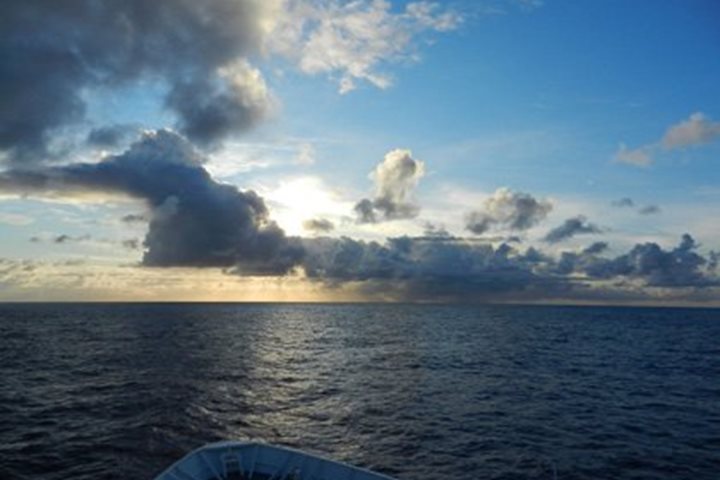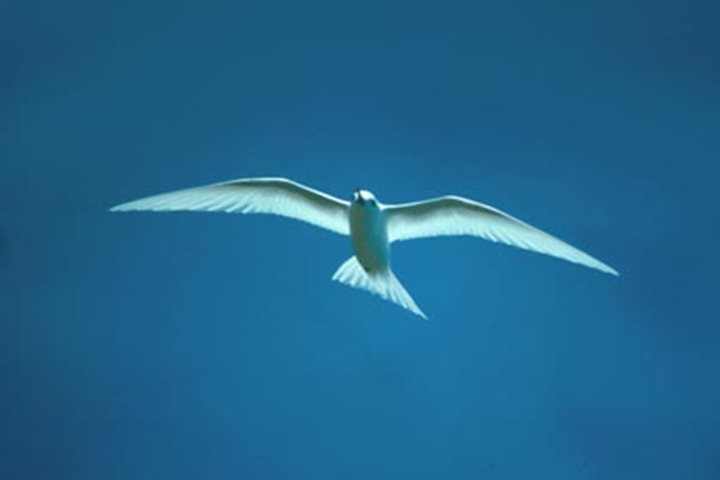French Polynesia consists of five separate archipelagos, each one quite different from the others. Today we have set our course away from the Society Islands, heading north to the Tuamotus. The Societies are high islands, the eroded remnants of volcanoes that erupted during the last five million years. They are renowned for their dramatic scenery and steep-sided, heavily forested mountains and valleys that have been carved by rainfall since their eruptions ceased in the relatively recent past. Ahead of us lie the enormous atolls of the Tuamotu Archipelago, low islands composed of coral reefs that rise only a few feet above the deep blue of the Pacific. These huge, ring-shaped reefs are built on much older volcanoes that formed more than fifty millions years before the present.
Today we made an unscheduled expedition stop at yet another kind of island, the latest in a series of special landings to take advantage of special opportunities. Makatea an uplifted coral atoll which is a part of the Tuamotus and lies at the southwest margin of the group. But it is very different from the others. Its age is intermediate between the high islands of the Societies and the more ancient atolls to the northeast, and unlike them it stands high above the ocean. As we approached, Makatea presented an impressive profile with vertical cliffs of coralline limestone rising almost directly out of the surrounding sea. These cliffs, which were once the outer wall of the atoll’s reef, rise over two hundred and fifty feet to a heavily forested plateau, apparently as flat as a tabletop. In fact there is a significant depression in the center of the island, where the lagoon once lay. The entire island perfectly preserves the form of the long-ago atoll, now thrust high above the sea by tectonic forces in the mantle of the Earth, far below.
We landed in a small harbor within a strange promontory of concrete platforms, towers and pyramidal pylons. These were the ruins of the loading facilities at the port that handled the many millions of tons of rock phosphate that were mined from the island, mostly by hand, in the early 20th Century. Once ashore we joined various groups according to our various interests, some of us hiking up the steep road to reach the plateau where we sought the rare land birds of the island or discussed the geologic processes that had created the reef, uplifted it and endowed it with the valuable phosphates. Some chose an easier stroll along the shore or a Zodiac cruise to view the island from the comfort of a seat on the boat, while others concentrated on photography of the port, the forest and more strange industrial ruins that were disappearing into the greenery. We also met a few of the sixty or so permanent inhabitants of the little place, chatted with them and enjoyed some of the beautiful music they played on their ukeleles.
At the end of the afternoon we cruised back out to the National Geographic Orion, just in time for a delightful teatime snack. The ship was soon underway and our journey continued – on across the Pacific and through French Polynesia, from the amazing scenery of the high islands to the gorgeous reefs of the atolls, with Makatea as the perfect transition.







